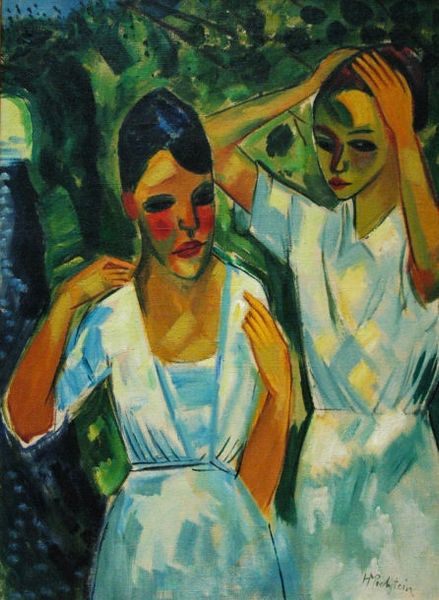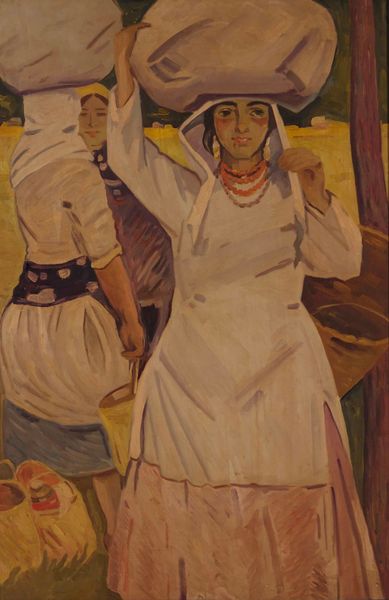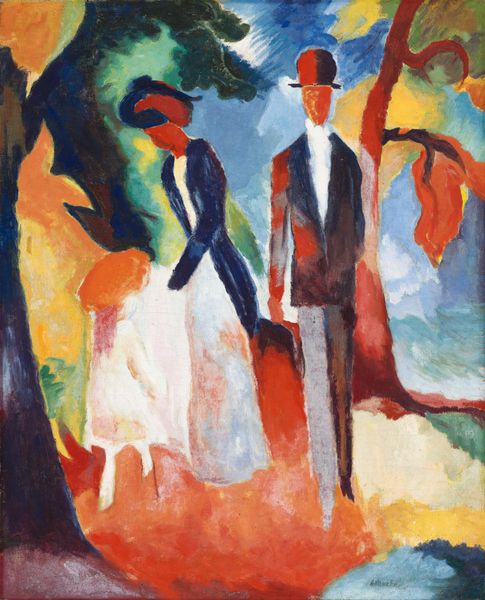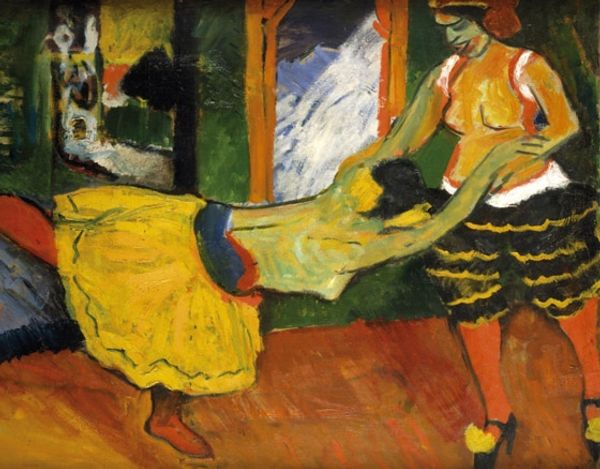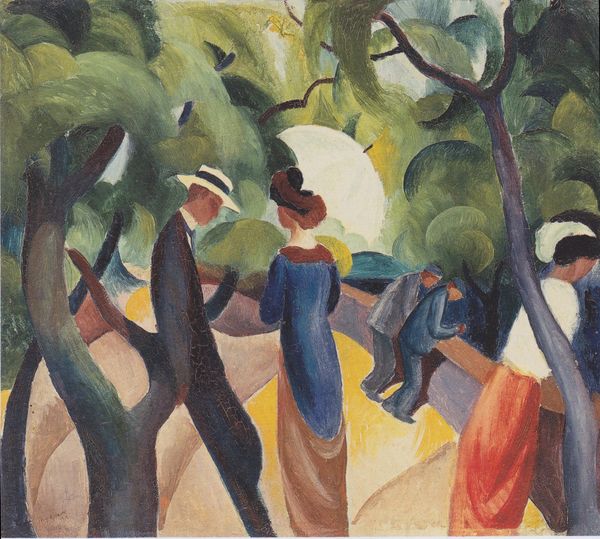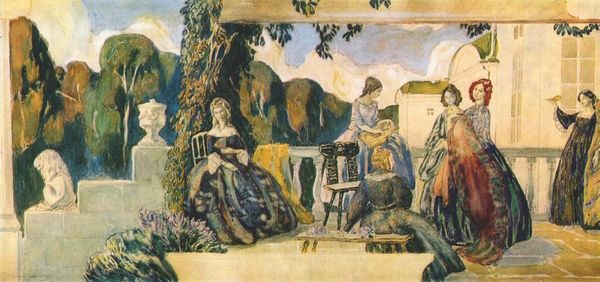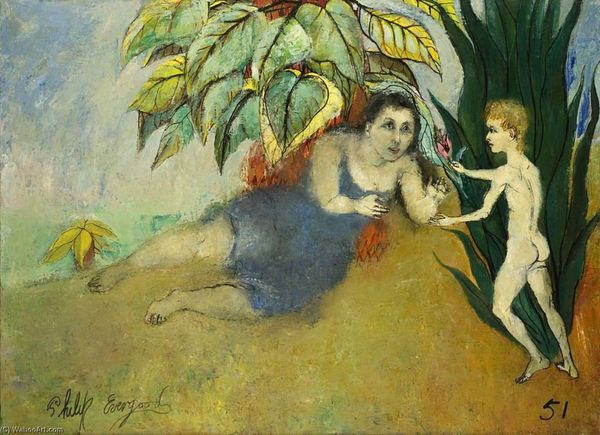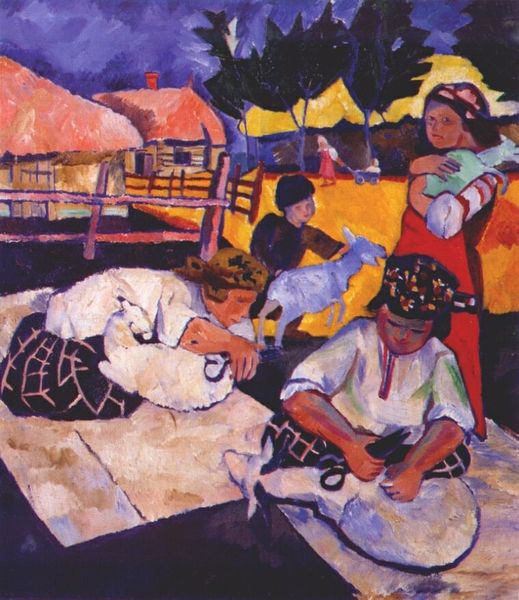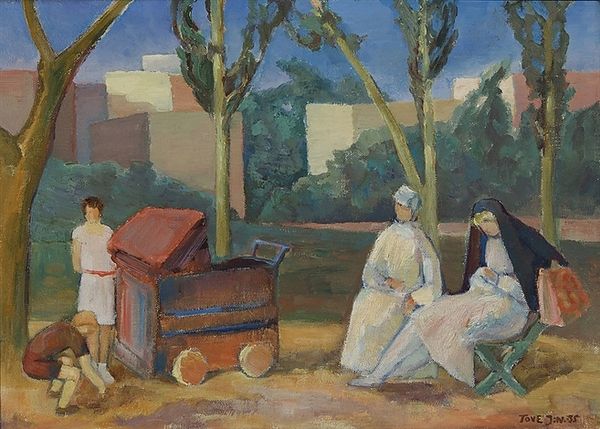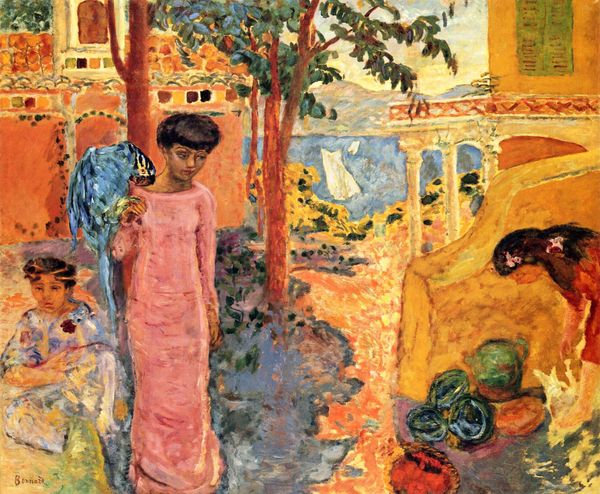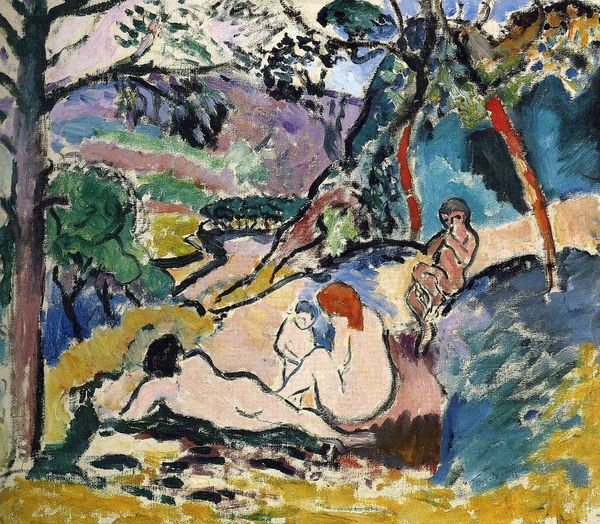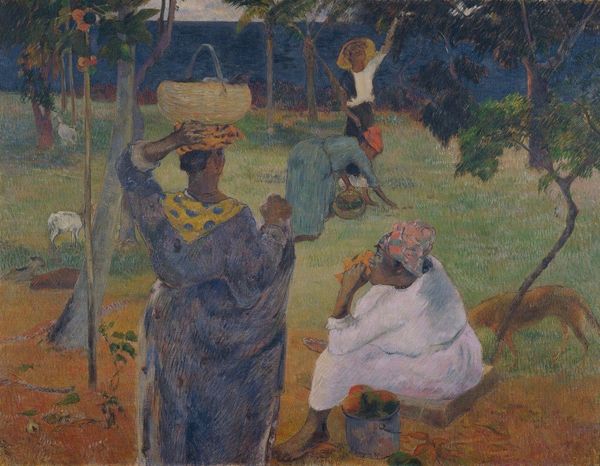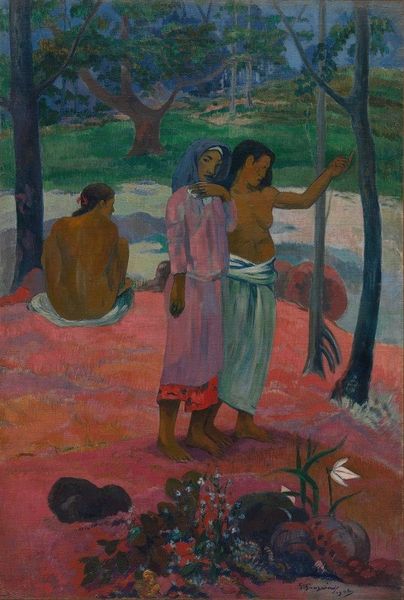
Copyright: Public domain
Victor Borisov-Musatov painted "Tapestry" sometime around 1900, likely in oil on canvas, as part of the Russian Symbolist movement. It features two women in elegant, old-fashioned dresses in a garden, evoking a sense of nostalgia for a bygone era. The setting and the figures' attire intentionally recall 18th-century aristocratic life. This harking back wasn't accidental; it reflected a yearning for stability and beauty in a rapidly changing Russia, one on the cusp of significant social and political upheaval. Musatov, influenced by French Symbolism, used the visual language of leisurely aristocratic life to critique the stark realities of early 20th-century Russia. Institutions like the art academies of the time emphasized realism and historical painting but Musatov was seeking something different. To understand such art, we delve into the social history of Russia at the turn of the century: studies of the aristocracy, the rise of revolutionary movements, and the artistic debates of the time. Only then can we begin to appreciate how Musatov used art to comment on the complex world around him.
Comments
No comments
Be the first to comment and join the conversation on the ultimate creative platform.
